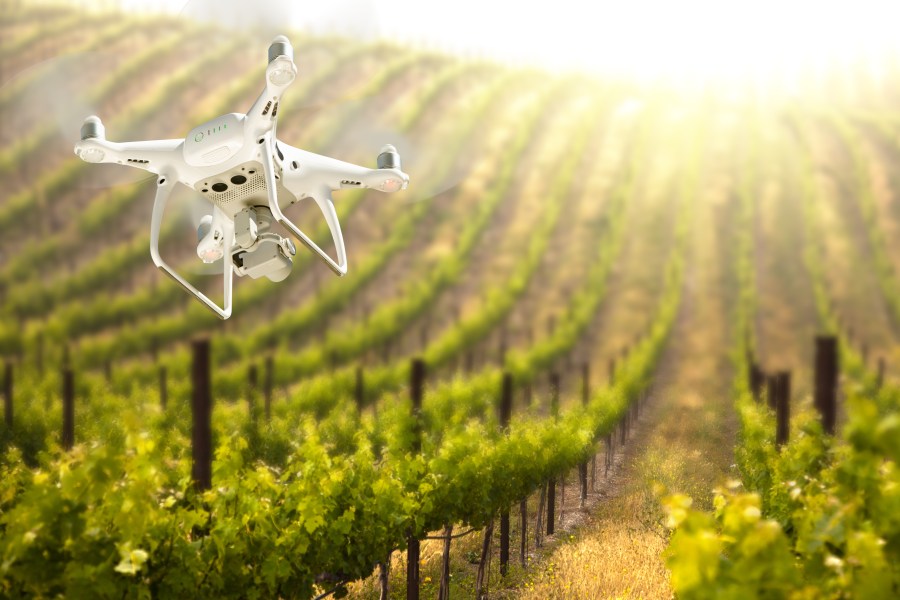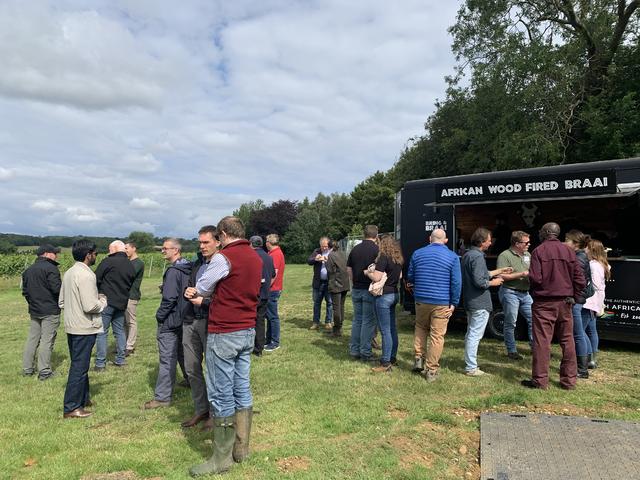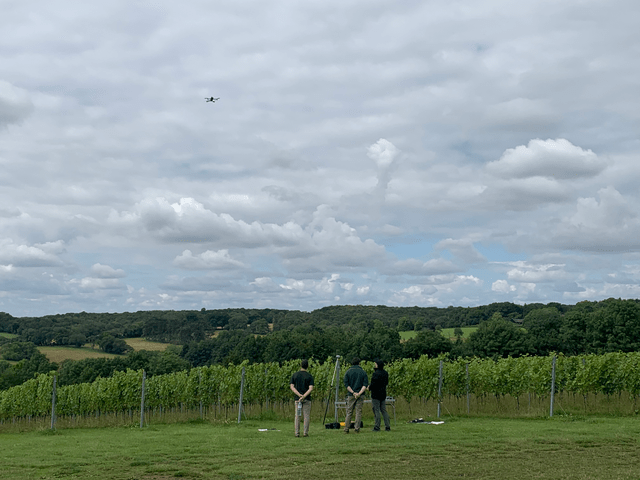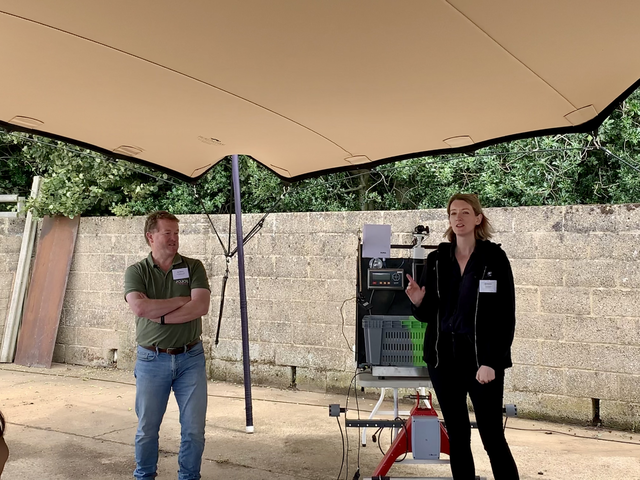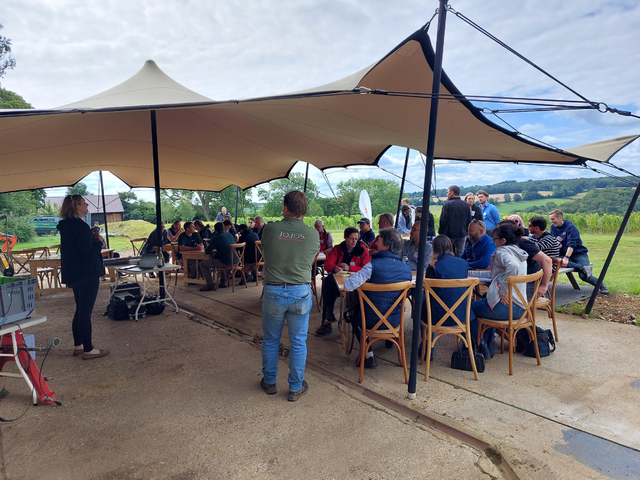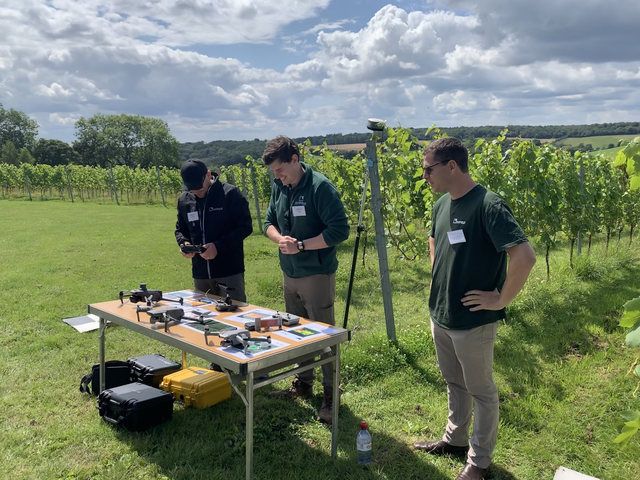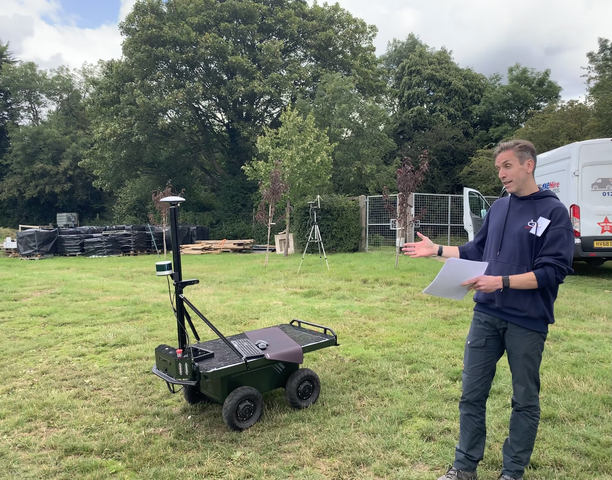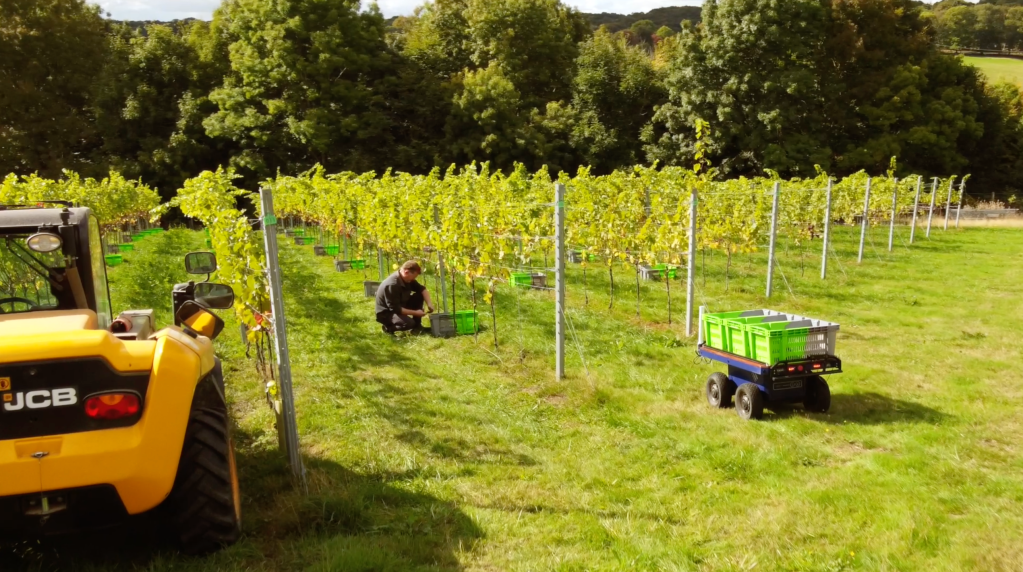Measure twice and cut once.
This principle is well applied to the grape harvest. The vineyard manager’s most critical decision is when to make those all-important cuts. Getting the timing right is a matter of careful monitoring and accurate measuring of grape ripening.
While most will focus on walking the rows daily to monitor the harvest, some vineyards are employing cutting-edge technology as well – to assess sugar levels, vine health, canopy vigour and stress levels effectively. Advancements in remote sensing and drone technologies have made this easier than ever before, although there is an initial cost to adopting these methods.
All vineyards are not created equal. Uneven canopy growth, changing soil types, micro-climates and other factors can all result in heterogeneous growth and ripening times for the crop. Advances in geolocation and georeferencing mean that this variability can be mapped with a precision not seen before. This allows for targeted management practices aimed at encouraging a more homogenous rate of ripening across the entire crop, variety by variety.
The expert view of pre-harvest analysis
Graham Fisher, Vinescapes Senior Viticulturist, cast his expert eye over the tricky business of pre-harvest analysis.
“Harvest is the highlight of the year, as well as one of the busiest and most costly. Monitoring ripeness starts after veraison as the berry develops and matures. It is critical for planning harvest logistics and winemaking. The winemaker will be expecting the best quality fruit appropriate for the style of wine being made and so accurate monitoring and record keeping is key to providing this. The most important metrics to measure are sugars, pH and total acidity, and some wineries also analyse for YAN (yeast available nitrogen) tannins and malic acid.
“Grape berry ripening is influenced by many factors including weather, but also variety and location. It is not necessarily linear or predictable! Bunches or berries are collected and generally sent to the wineries or other labs for analysis, but sugars are also done in-field with refractometers. The berries and/or juice should be tasted – as the vineyard manager and winemaker’s palates are a useful tool for assessing the development of flavour, tannins and other ripeness indicators.
“Good data collection and record-keeping enable baselines to be established in order to provide more accurate predictions and inform management decisions – for example, if the vineyard is lagging well behind in the current season, compared to others, it may be necessary to consider crop thinning to ensure the vine is able to ripen the crop.”
Find out more: Vinescapes is delivering a workshop ‘Harvest Preparations in the Vineyard’, on 23 August in Surrey. It will cover sampling techniques and tools for monitoring grape ripeness and forecast harvest date as well as managing pests and diseases and planning for harvest.
What is Precision Viticulture?
Precision Viticulture is an umbrella term that covers a range of practices and technologies that help vineyard managers to make evidence-based decisions about how to manage their estates to meet their goals. These goals could pertain to when to harvest, the size of the yield or perhaps even the final price point of the wine.
Precision Viticulture (PV) differs from Precision Agriculture more generally because of the orientation and geometrics of the canopy. The vineyard canopy is quite unique in form and complexity. This presented significant problems when PV was a young science, but gradually the technology has grown to meet the challenges of this unique environment.
The first exercises examined the spatial variability of vine growth and berry growth in order to capture information that could be used to make management decisions. This was tied into making vineyards more profitable by maximising yield, but also to mitigate the effect of factors like disease and variation in soil moisture.
What are the benefits of PV?
The collected data is used to identify patterns, but also to highlight variability so that it can be managed in a better way. By understanding the vineyard better, and the variability it experiences, management practices can be more targeted and therefore cheaper. Fertilisers can be applied to spot treat rather than globally, for example.
I spoke to David Green, a Professor in the Geography Department at the University of Aberdeen, about the application of PV. David specialises in geospatial technologies and has spent many years working with research vineyards and commercial vineyards in the course of his research.
“Before PV, there were years and years of common sense,“ said David. “People adapted vines to a certain area, noticing that vines grow better on south-facing slopes, for example. There’s an awful lot that has gone before that’s valuable still, but when you plug the two together [learned experience and PV] you’ve got this tremendous record of information and knowledge captured which can be used to help us grow grapes more efficiently and adapt to a changing climate.”
These technologies and methodologies debuted in a research context. Spatial analysis tools attempted to understand differences in crop growth across different areas of a vineyard. This research pulled together lots of different data sets, including terrain, drainage, and soil type. Remote sensing like satellite imaging and aerial photography was to capture the data as a starting point. Initially, the technology didn’t always work as well as hoped, because the resolution was not high enough. So PV found itself reaching a peak in past decades but failing to make a real impact.
Now, it is beginning to evolve again. Technologies like drones, for higher resolution imagery, and the use of artificial intelligence and deep learning used in combination with image capture, are producing high-quality information with a practical application, which can get right down to the vine level.
“That’s translating now into drones doing some of the spraying and that is quite a revolution,” David told me. “The old PV was focused on capturing data with instruments, you’d go around and check the sugar content of the grapes. One of the limitations in big vineyards was finding the time to do all of this sampling. Now geographical information systems provide the means to take point samples with different types of electronic equipment and wifi signals. You can interpolate the data to get a map of the vineyard with a plus or minus in terms of something like soil moisture across the whole vineyard. The spatialisation of that data can be pieced together with other data sets to start to understand why a vine in a particular row is not performing in the same way as others.”
This technology has evolved very rapidly in recent years, particularly in regard to artificial intelligence and automation. There are already automated robots out there that can complete tasks like spraying or pruning. Some are now being programmed to take sample data whilst they traverse the vineyard completing their main duties.
In many countries, the cost of PV has been prohibitive, leading to slow rates of adoption. But in some areas like California, where the vineyards are very large and the values of wine (and by extension, each individual vine) are high, the cost of the technology required is just a drop in the ocean and worth the initial outlay. They provide a commercial imperative to drive the research forward.
Change is coming as the technology becomes more accessible. Almost everyone has a mobile phone, and phones now come equipped with GPS and sound monitoring. Apps to map vineyards or identify diseases from a simple photograph are widely available.
Drones are more affordable and easier to use, so vineyards are able to capture their own data. Data management software is online, so it is easier to upload images to the cloud and get standardised information back quickly. This could include the normalised difference vegetation index (NDVI) which gives some idea of yield, canopy mass and biomass.
Read about one robotic pruning project: https://vinum-robot.eu/project
Vineyard management software
More digital agricultural solutions companies are springing up to provide vineyards with software solutions aimed at making viticulture more sustainable, using technology to optimize their practices.
One example is ELMIBIT d.o.o., who have created a vineyard management software package called eVineyard. It provides a set of tools for work management and tracking, reporting and compliance, advanced data analytics and more, all of which can help winegrowing organisations to lower costs and improve grape quality in a sustainable way.
This software can be used on a computer or via an app on a mobile phone. It allows all of the data about vineyards, teams, assets and results to be recorded, analysed and visualised. In terms of pre-harvest analysis, samples can be recorded and analysed across the vineyard, over time. It is possible to combine information about the season’s temperatures recorded by a weather station with grape sugar and acidity levels recorded via grape sampling. This would inform the harvest date, as well as which areas to pick, for a selective harvest.
Regardless of the provider, when used over a number of years, well-ordered and systematic records make it easier to compare seasons and make informed predictions. This might include patterns in weather related to when certain grape growth stages were reached, or what the grapes’ composition was on the days leading up to a previous harvest. It can also help to manage workflows – tracking machine work with GPS for example, and thereby understanding more about how much different activities cost in time and materials.
Several English vineyards have adopted software of this kind, including JoJo’s Vineyard in Henley-on-Thames who are digitising much of their operation. They are working with the FIWARE Foundation on a solution for wine traceability and vineyard data sharing for different wine value chain stakeholders called eVine2Wine.
JoJo’s Vineyard recently held an Agri-Epi Open Day to showcase their use of technology and future plans. An S-Rex Cover Crop drill was presented which has been developed with Harrow & Hope. Outfield Technologies showcased drones that work with a crop data system and Antobot exhibited their autonomous robot platform.
Read more about eVine2Wine: www.fiware.org/2023/01/19/evine2wine-sharing-vineyard-data-with-the-wine-value-chain/
Challenging the old order
Jobs that were previously very laborious are now fast and simple because the extraction of information has been digitised. Where measurements are taken manually, there are natural limitations to the methodology. You might only have a certain number of physical soil tensiometers per row, for instance. Now it is easier to do more sampling and, using AI, interpolate between the point samples to build a continuous surface. It’s not the real data as if it had all physically been measured, but it gives a plus or minus. This is a big jump in the capacity to understand how variable soil moisture is across the vineyard and how that impacts plant growth across different varieties.
LIDAR technology (using laser to measure variable distances) can scan vine rows and build a very detailed high-resolution computer model of the vine plant. It is possible to model grape clusters, leaf angles and elevations. This information can be used to work out the Leaf Area Index, which helps to calculate the biomass of the plant and the projected yield.
Phenotyping can be based on these models now, for example, and all of the information is generated from non-destructive, remote sensing methods.
By having the right information to describe that canopy and the state it is in at a certain time, evidence-based decisions are easier to make. The anticipated window for harvest can be adjusted, which is particularly important as climate change impacts the growing season.
This new learning is challenging old assumptions. In the steep vineyards of Germany, for example, remote sensing has shown that terracing isn’t always effective. While the system is good for access and growing grapes on steep slopes, some of the terraces have been shown to act as cold air traps. In extreme weather, some varieties are killed because the cold air didn’t drain away.
Read more about sensor-based phenotyping of physical barriers of grapes to improve resilience to Botrytis:
www.frontiersin.org/articles/10.3389/fpls.2021.808365/full
Other applications
Many will be sceptical that investment in Precision Viticulture will bring about a tangible return. It is perhaps useful to consider the ‘fringe benefits’ of technologies that map and measure the vines. Most significantly, there are numerous applications for the promotion of wine tourism – an area of considerable growth in the UK.
WineGB has stated that wine tourism now makes up 24% of vineyard income and that visitor numbers are up by 17% on 2021. Repackaging vineyard data into virtual tours or mapping the buildings could generate new revenue streams quickly since tourists are increasingly interested in vineyard management.
The future
PV is not without its problems and limitations. As the data becomes higher in resolution, the processing time increases exponentially. Waiting eight hours for the numbers to be crunched and a model to be generated isn’t always going to be possible, so making improvements to data processing is a pressing concern for researchers.
Vineyard managers need to be able to ‘plug and play’ – to generate the data themselves. Applications and hardware need to be quick to understand and use without significant amounts of training. The apps that process data need to provide answers rapidly. The industry is already moving in this direction.
On the other hand, having this incredible wealth of data available allows for more effective planning. In-depth tracking of vine performance doesn’t just drive data-led decisions about harvest dates for this season. It aids in formulating a detailed understanding of how the estate is performing over time. As more data is added, season by season, that model improves in accuracy. It learns.
We are expecting change over time. A 2022 study examining the implication of climate change projections for UK viticulture, for example, talks about the “greater potential for Pinot Noir for sparkling wines and shifting suitability to still red wine production” in the relatively near term. The researchers warn against the dangers of sector entrenchment around sparkling wine as opportunities for the same levels of quality in still wine are likely to present themselves over the coming years. PV may well give us the tools to plan for that time as it approaches.
Read the WineGB 2022-23 Industry Report: https://winegb.co.uk/wp-content/uploads/2023/06/WineGB-Industry-Report-2022-23-FINAL-4.pdf
Read more: Climate Change Projections for UK Viticulture to 2040: A Focus on Improving Suitability for Pinot Noir. OENO One 56
https://doi.org/10.20870/oeno-one.2022.56.3.5398

